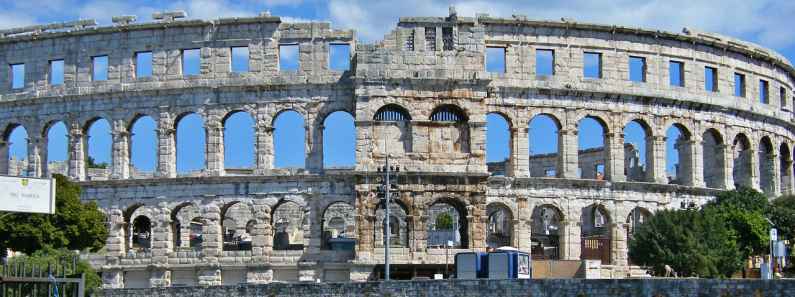Experience the wonders of Croatia in 2021
Croatia’s coastline is lined with beautiful beaches, many islands and clear turquoise waters. Inland, the country is truly scenic, while its cities are full of historic wonders to explore. However, the country has a number of unique locations to visit on vacation, including, among others, the Pula Roman Arena, the fascinating Plitvice Lakes and the Veliki Tabor Castle. Read on to find out more about these great attractions in Croatia.
1. Pula Arena, Pula, Croatia
Pictured above and here, one of the best-preserved Roman amphitheaters in this world is located in Croatia, not Rome. It is also the sixth largest Roman amphitheater still standing today and the only one to retain its four side towers. While brutal shows were put on in the past, the well-kept arena is still used today for more tame events.
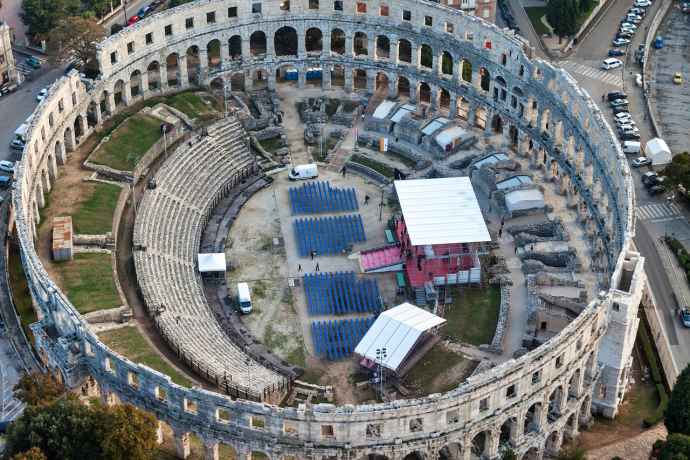
Pula Arena is believed to have been constructed between 27 BC and the year 68. At that time, the city of Pula – then called Pietas Julia – was establishing itself as an important city in the Roman Empire. The arena was originally built from timber, but was later replaced with stone. The amphitheater was used gladiatorial fights over the centuries until they were banned by Emperor Honorius. However, the arena did feature combats between convicts and wild animals right up until the 7th century.
In the Middle Ages, the amphitheater was used for fairs and tournaments. However, as with many other Roman structures of the period, the arena was partially deconstructed. The stones were used for other buildings in the area. However, in 1583, a proposal was made to deconstruct the arena and rebuild it in Venice, but the proposal was rejected.
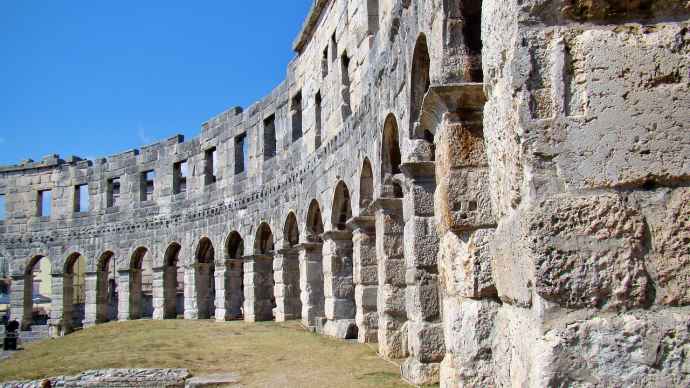
The amphitheater was restored in the early 19th century and from the 1930s, the arena has been used for concerts, theater productions, military ceremonies and even ice hockey games. Each summer, Pula Arena hosts the Pula Film Festival.
2. Plitvice Lakes, Plitvicka Jezera, Croatia
Plitvice Lakes in Croatia is a chain of 16 mountain lakes, with startling blue waters and convenient pathways to traverse the 12 Upper Lakes (Gornja Jezera) and four Lower Lakes (Donja Jezera), surrounded by lush vegetation.
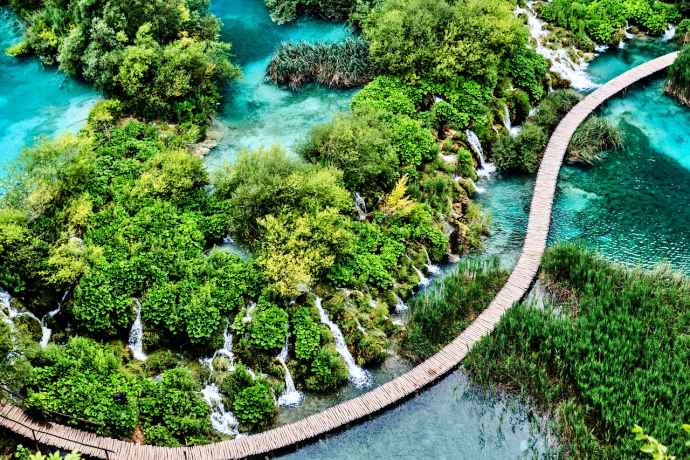
Plitvice is a UNESCO-recognized National Park in the inland Lika region of the country, surrounded by the Dinaric Alps. While the whole park is beautiful, Plitvice Lakes are definitely the main attraction.
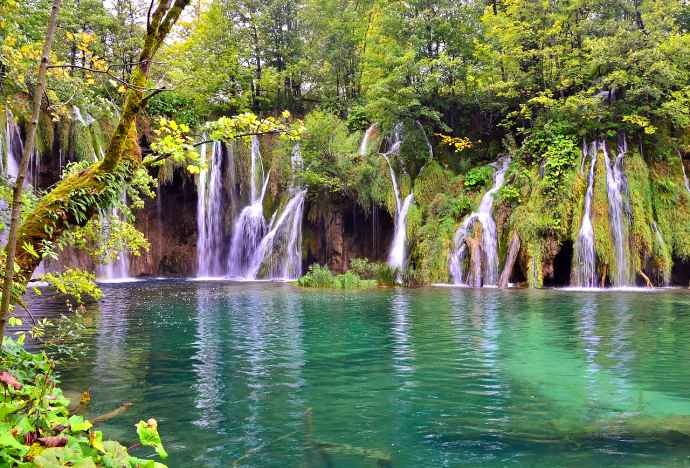
However visitors are urged to stay to the paths, as the park was the site of the first skirmish between Serbia and Croatia during the Balkan Wars. At that time, landmines were planted throughout. While the area was certified mine-free in 1998, it is believed there still may be a few landmines located in the more remote areas of the park.
3. Veliki Tabor Castle, Hum Kosnicki, Croatia
Veliki Tabor Castle is one of the most impressive fortresses in all of Croatia. Contruction began in the middle of the 15th century. The castle, which is also a museum, has a mysterious side. According to legend, the land surrounding Veliki Tabor was once ruled by Count Herman II of Celje. The count’s son, Fridrik, fell in love with a local girl named Veronika. However, the count did not approve of the romance, so the lovers escaped to Slovenia, where they were secretly married.
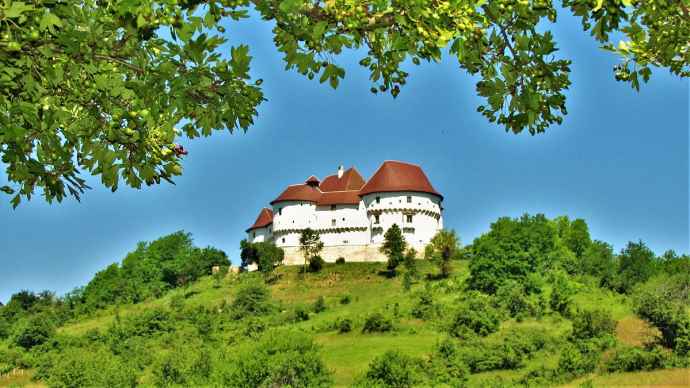
Photo by Stjepko Krehula/Wikimedia Commons
Unfortunately, Fridrik’s father found out about the marriage and he imprisoned his son in the Celje Tower, where he languished for more than four years. Meanwhile, Veronika escaped, but was eventually tracked down near Veliki Tabor. She was accused of being a witch by the count, who believed she had cast a spell over Fridrik. Her trial proved Veronika innocent, but the count ordered his soldiers to kill her. She was drowned in the courtyard of the castle and according to legend, her body was built into one of the castle’s walls. Some people claim that a night, you can still hear Veronika’s cries over the hills and valleys in the area.
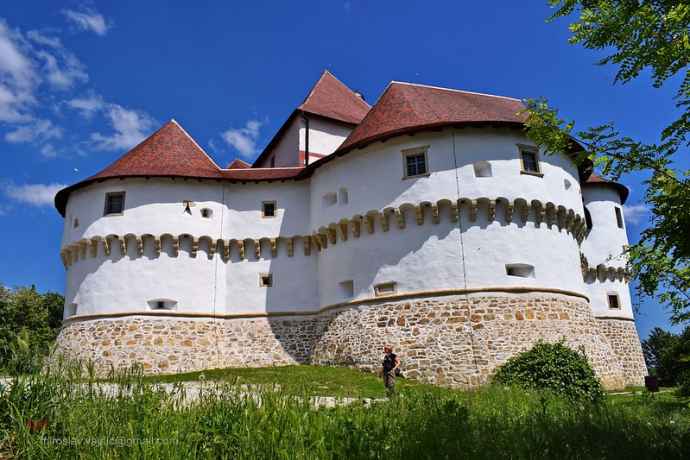
Photo by Miroslav Vajdic/Flickr
These days, Veliki Tabor houses a museum and hosts activities such as art exhibitions, falconry and knight tournaments. Each July, the Tabor Film Festival, an international short film festival, is held at Veliki Tabor during July.
Experience some of the magnificent sites in Croatia this year - currently, vaccinated travelers are welcome!
top
Travel Guide - Home - Croatia Guide

|
